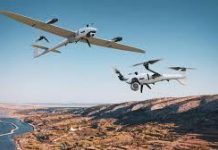
Reports indicate that a prototype of the third iteration of the British Challenger 3 main battle tank is currently en route to Germany, although this information has yet to be officially confirmed by Rheinmetall or the defense ministries of both Britain and Germany, adding an element of mystery to the situation.
Online images purportedly showcasing the Challenger 3 tank have emerged, suggesting that London intends to either produce or refurbish a total of 140 of these tanks. Of particular interest is the claim that the initial tank of this fleet, namely the prototype in transit, has already commenced its journey to Germany.
Amidst conjecture on social media, it is speculated that the tank will undergo a series of rigorous evaluations in Germany, possibly simulating operational conditions to thoroughly assess its performance before receiving official production approval, including upgrades from the Challenger 2.
Germany is often chosen as a testing ground for European tanks due to several factors. Firstly, its diverse and advanced terrain offers an ideal environment for comprehensive testing, ranging from flat plains to hilly regions, dense forests, and authentic urban settings.
Furthermore, Germany boasts high-quality testing facilities honed over years of tank production, equipped with cutting-edge technology capable of simulating various combat scenarios effectively.
The country’s central location in Europe simplifies and reduces costs associated with transporting tanks for testing compared to overseas or remote locations. Additionally, testing tanks in Germany promotes interoperability among European forces, fostering synchronization of military strategies and enhancing cooperative combat capabilities.
Finally, Germany’s reputation for strict regulations and high standards ensures that tanks tested on its soil adhere to rigorous criteria, ultimately improving their reliability and performance in real combat situations.
Challenger 3, developed by BAE Systems, represents a significant leap forward in the British arsenal, serving as an upgraded version of the Challenger 2 main battle tank, tailored to meet the exigencies of contemporary warfare. This formidable platform integrates cutting-edge protective measures, heightened firepower capabilities, and enhanced mobility.
At the core of Challenger 3’s arsenal is its new 120mm L55 smoothbore gun, capable of deploying various types of ammunition, including the latest Armor Piercing Fin Stabilized Discarding Sabot (APFSDS) rounds and programmable High-Explosive Air Burst (HEAB) ammunition. The tank’s turret has undergone a redesign to accommodate this new gun and an automatic loader, augmenting its rate of fire while reducing crew size.
Shielded by a modular armor system adaptable to diverse threats, Challenger 3 boasts an advanced active protection system adept at detecting and neutralizing incoming projectiles. Its hull and turret are fortified with state-of-the-art composite armor, complemented by additional defensive layers such as explosive reactive armor and a nuclear, biological, and chemical (NBC) protection system.
Propelled by a robust 1,500-horsepower engine, Challenger 3 achieves speeds of up to approximately 60 mph, with its upgraded suspension system enhancing off-road maneuverability and ride comfort. Further enhancements include a revamped steering mechanism and improved braking system, bolstering overall maneuvering capabilities.
Challenger 3’s digital suite integrates a new fire control system and battlefield management system, offering heightened situational awareness and facilitating seamless information sharing with allied units. This sophisticated integration enables enhanced coordination and efficacy on the battlefield.
The timeline for Britain’s conversion of Challenger 2 tanks to Challenger 3 standard hinges on several variables. Complexity of modifications, the scale of the upgrade project, and resource availability are pivotal factors influencing the duration of the conversion process. The undertaking demands skilled personnel, adequate resources, and efficient logistical support to ensure timely completion.
Additionally, unforeseen obstacles or complications could prolong the timeline. For instance, issues with new equipment or unexpected performance discrepancies during testing may necessitate troubleshooting and corrective measures, thereby extending the modification process.
Given these variables, offering a precise timeline without specific details proves challenging. However, drawing from analogous projects, the complete modification of each tank could span from several months to a few years. It’s important to note that this estimation is approximate, and actual durations may significantly fluctuate depending on contextual factors.
In a sobering disclosure, Admiral Anthony Radakin, the UK’s Chief of Defense Staff, recently revealed the nation’s alarming military preparedness status. Only 40 tanks, alongside a limited number of frigates and destroyers, are currently deemed operationally ready for immediate deployment. This concerning revelation, covered by the Daily Mail in July, underscores a significant decline in the UK’s military readiness.
During his address to parliament, Admiral Radakin confirmed that merely 20% of the total 200 tanks in the UK’s inventory are combat-ready. A similar predicament is evident within the navy, where only 11-12 out of 17 frigates and destroyers are deemed fit for active service. Such shortcomings are particularly disheartening for a nation historically celebrated as a naval powerhouse.
Despite the grim statistics, reports indicate that London remains committed to defense expenditure, notably investing in the production of new armored vehicles. However, the impact of these financial commitments on the nation’s military capabilities is not expected to materialize significantly until the latter part of this decade.
Regarding existing assets, Defence24, a Polish defense journal, has speculated on intriguing possibilities. It suggests that around 900 Chieftain tanks from the Cold War era may be stored in undisclosed British Army facilities, remnants of a tumultuous global epoch epitomized by Europe’s Iron Curtain era. Furthermore, Defence24 unveils the potential presence of 180 dormant Challenger 2 tanks within the British Army’s inventory, though these assets are not slated for transition to the modern Challenger 3 model.




